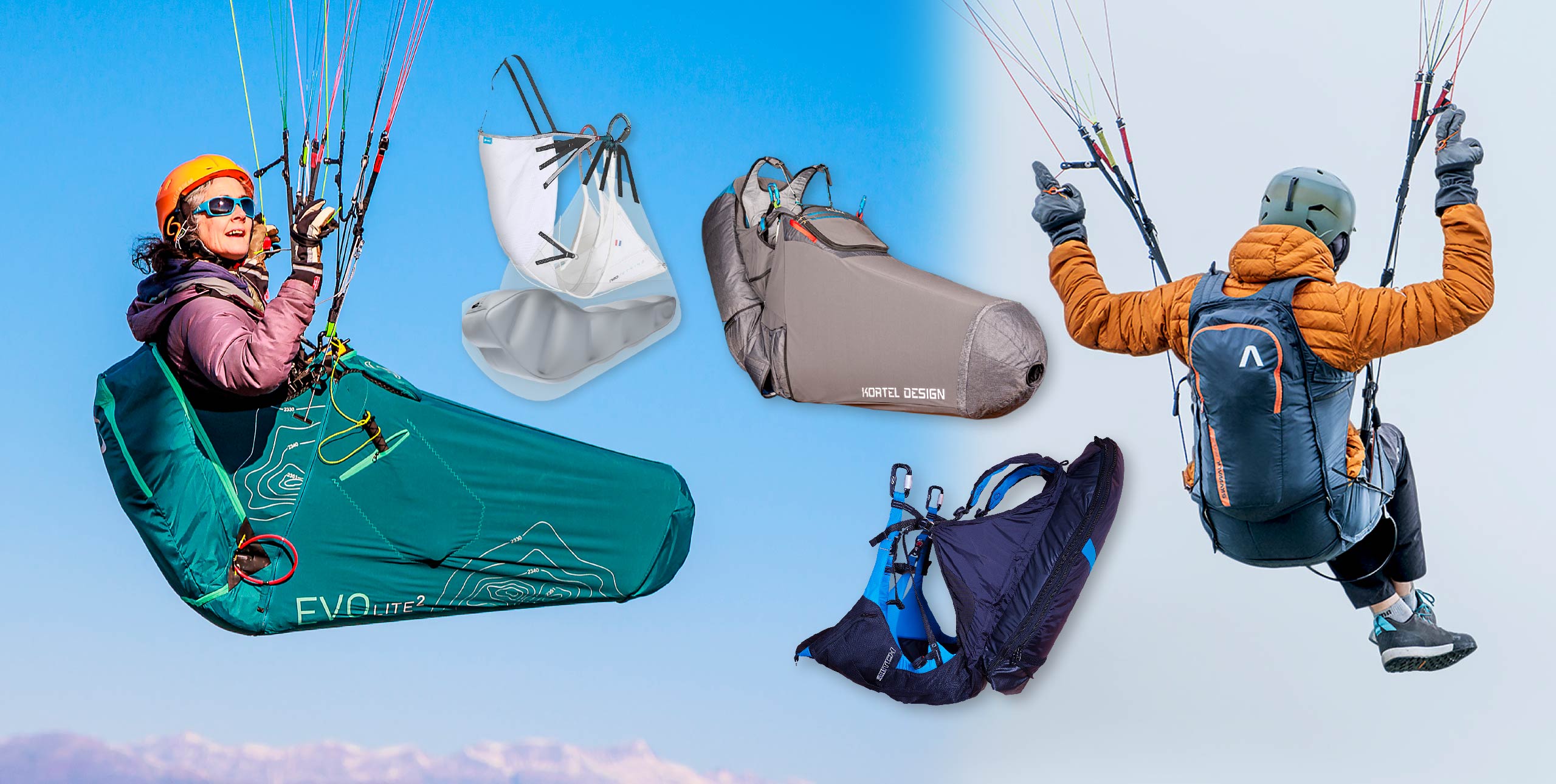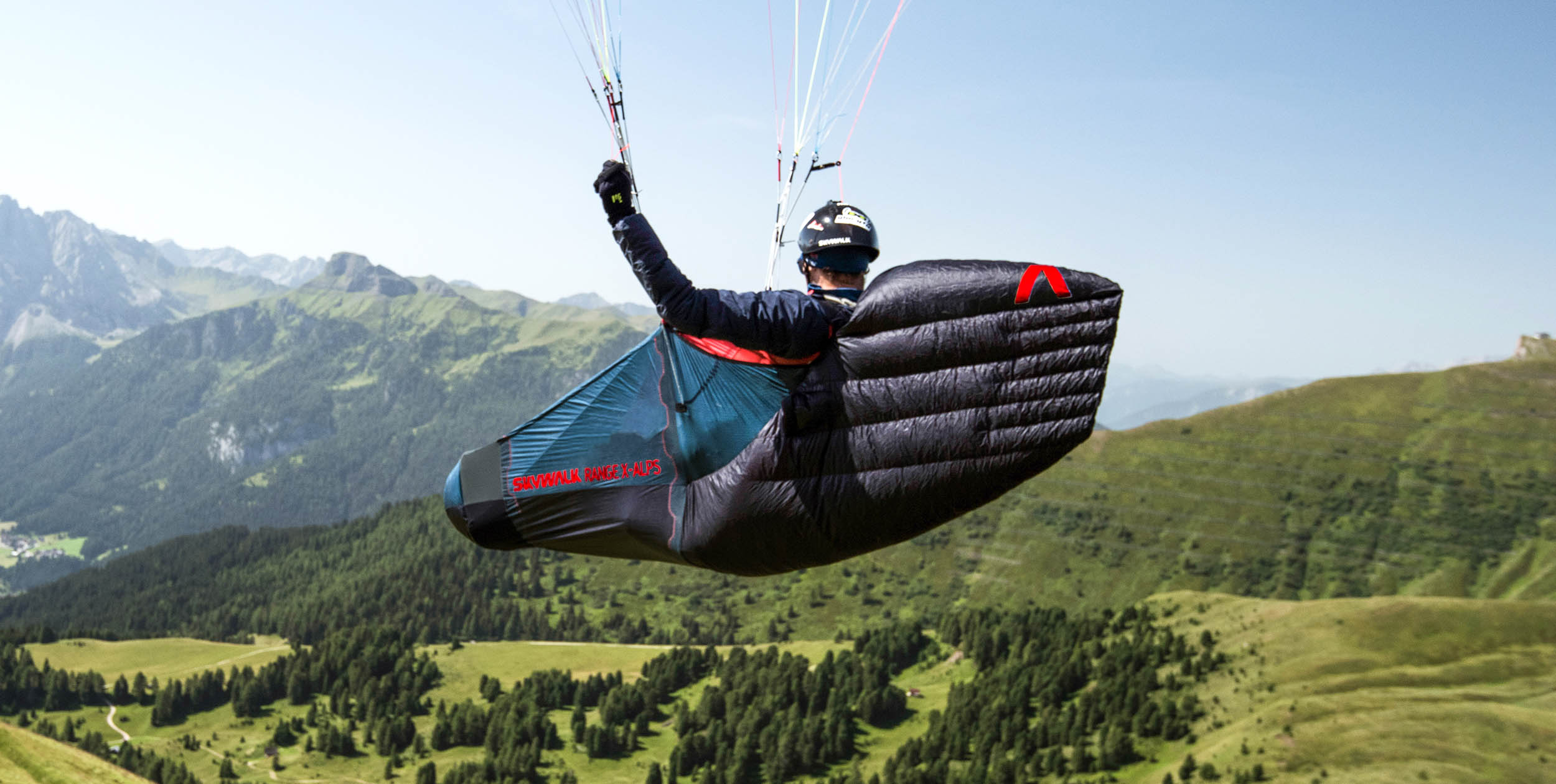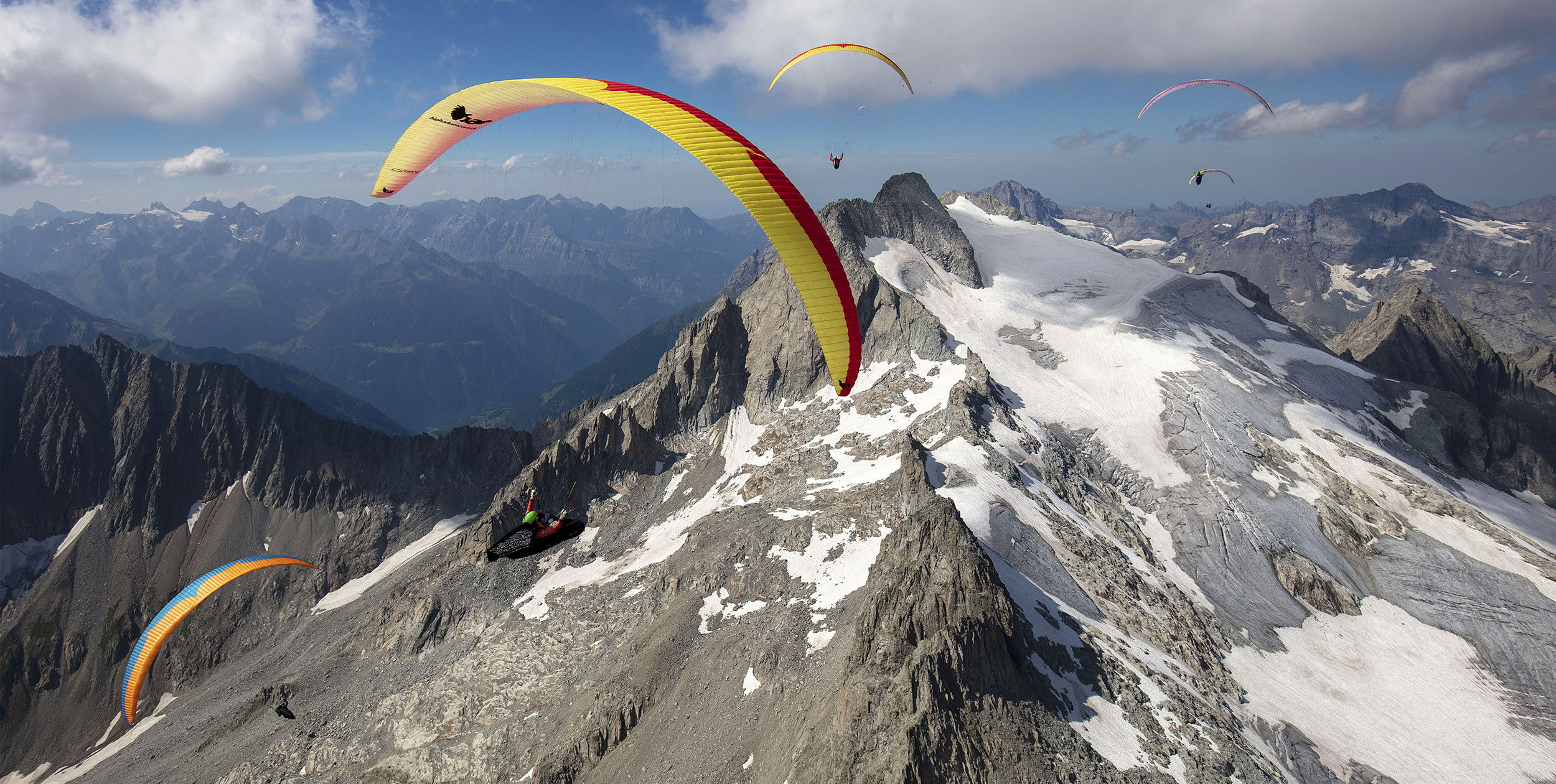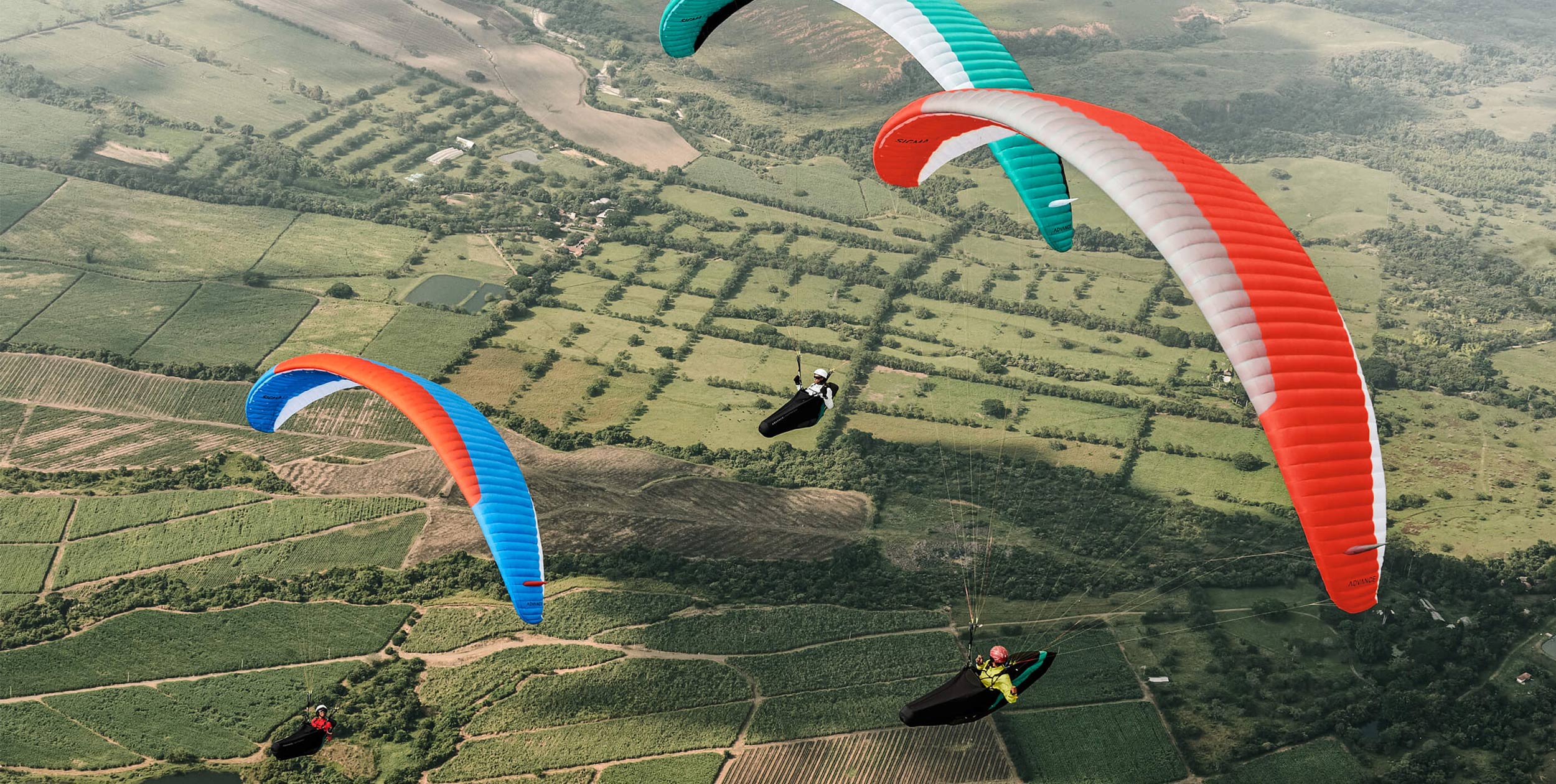
Advanced gliders fly noticeably faster at full speed, push into wind much better than intermediate gliders and give the pilot more information about the air, writes Bastienne Wentzel. This means you can go further and faster.
You will notice this if you fly an EN B and try to push into wind against a two-liner EN D. The EN D flies like a knife through butter, leaving you feeling like a wooden spoon pushing through porridge. This can be frustrating, to say the least, and it’s usually about then that you will start to think about flying a more advanced glider.

Talking about advanced gliders is really talking about two separate types of gliders. On the one hand, there are classic EN C and EN D gliders, which mostly have a three-line setup with A, B and C-risers, an aspect ratio (AR) between 6 and 7 and fewer than 100 cells as a rule of thumb.
An entirely different type are two-liners, which can be either EN D or CCC, which means they fall outside the D class but are still certified for use in competitions. Two-liners have – not surprisingly – two rows of lines on the canopy and only an A and a B riser. This simple difference changes the glider characteristics significantly, even apart from the generally higher aspect ratio of up to 8 and cell count of well over 100.
Classic sports gliders, EN C and EN D
But first, let’s take a look at ‘regular’ advanced gliders, also called the sports or performance class. Most EN C gliders are a smooth step up from a high B, and similarly, classic EN D gliders are a smooth progression from EN C.
A glider in this class is mainly used for cross-country flying, therefore comfort for the pilot is important. Arne Wehrlin is head of department and partner at Skywalk Paragliders. “For sure advanced paragliders have more performance and speed and a better glide because of the higher aspect ratio,” he explained.

three-liner, AR 6.43); Photo: Tristan Shu / Skywalk
“The profile is different and optimised for this. The internal structure is more complex and there are more rods for a cleaner surface. Because the main focus is long flights they are optimised for less brake pressure and are easy to fly on bar.”
Creating a better and smoother aerofoil is very important, says Triple Seven designer Aljaž Valič. That is done by adding more cells, fewer seams and optimising the internal structure, but also through better production. “A complicated structure is also more difficult to sew and it is more expensive,” he explained.
“Through more experience we are improving the production process. That leads to better aerofoils. A clean surface is important. The glider is easier to handle, the brakes will be more direct and efficient. It improves handling for any glider.”
Be honest, ask yourself ‘Why do I want to fly a more advanced glider?’
So when do you decide to abandon your trusted intermediate and step up to an advanced glider? The time to move up a class is generally later than pilots think, say most experts. A lot of pilots fly wings that are a level too high.
Generally, gliders in a higher class transmit more information about the air, in addition to having more speed and a better glide. You can only benefit from this extra information if you know how to interpret that. If not, it will only make you feel uncomfortable.
This in turn makes you back off from situations that you would fly into on a lower-level glider, causing you to fly less on the new race machine instead of further and longer. But if you are ready for it, a step up can also improve your skills more than staying on the same glider.
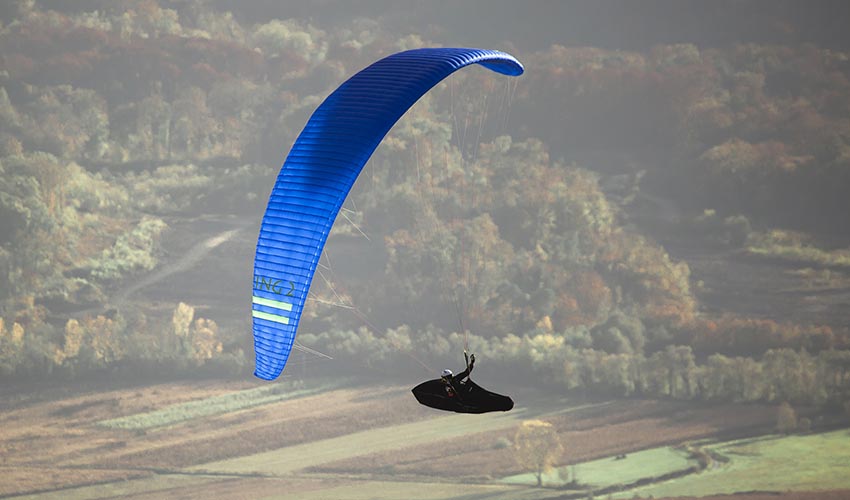
Aljaž said: “A higher aspect ratio and a thinner aerofoil give you a better feel, the glider sniffs out thermals more. That is something you cannot see from the certification. But if you don’t know how to feel that, you will notice a better glide and some more speed but the rest will be shaded.”
The advice is to ask yourself why you want to step up. If you can’t cross that ridge on your intermediate glider after really trying all you can, and your friends on a higher-end wing do make it, and you feel confident, it may be time to move up.
Seb Ospina, an accomplished XC and competition pilot, told us how not to step up. As a young but very skilled and current pilot he progressed quickly and ended up flying high-end wings like the Advance Omega 7, Airwave Magic FR 2 and Axis Mercury when he was just 17, 18 years old. “I shouldn’t have. They were a bit too much for me and set me back a year in progression.”
A few years later Seb flew his first two-liner, the first Enzo, and did his first full stall on it. “This was also not the best progression. Now I have the hours and have done SIV on two-liners. That’s all I fly now.”
Seb’s advice about stepping up to a two-liner? “If you have really flown the sh*t out of your glider, fly at least 100 hours a year, done the SIVs, fly in many different conditions. Then if you feel that you are missing some top speed and glide into wind, you are probably OK to step up to a two-liner. It’s not going to make you thermal better.”
How a two-line paraglider flies
As we mentioned, two-liners are significantly different from classic gliders with three or more line galleries. Taking away a full gallery of line attachment points on the canopy means that there is much less support for the cells from front to back, chordwise.
The A-lines carry the most weight but are set back from the cell openings quite a bit. This affects handling. It also means they are more likely to collapse if the brakes are touched while on bar. With a two-liner, you only use the brakes when thermalling.

Most two-liners have long rods to support the shape. The canopy of a two-liner is generally very solid and stiff. That means that collapses do not happen often, but if they do, they are much more violent and recovery is much slower and needs precise pilot input. You need to fly the wing skilfully to avoid collapses in the first place.
The small cell openings and the large span also mean that it takes a while for the glider to inflate especially in nil winds. During this time, the long span will wriggle around a lot.
Finally, the brake range for two-liners is sometimes so long that a wrap is needed at trim speed. The long brakes at trim are necessary to allow for the acceleration where the wing tilts more forward and lifts the trailing edge.
Seb explained how it feels to fly a a two-liner: “A two-liner manages the glide better in moving air. It takes the bumps better. A big difference is in rear-riser control. With a two-liner you have very direct authority over the angle of the glider without sacrificing performance and without using the brakes.
“It gives me better control especially on bar. That is a game-changer in my view. I was actually feeling more nervous on a three-liner close to the ridge than on a two-liner because of the better control.”
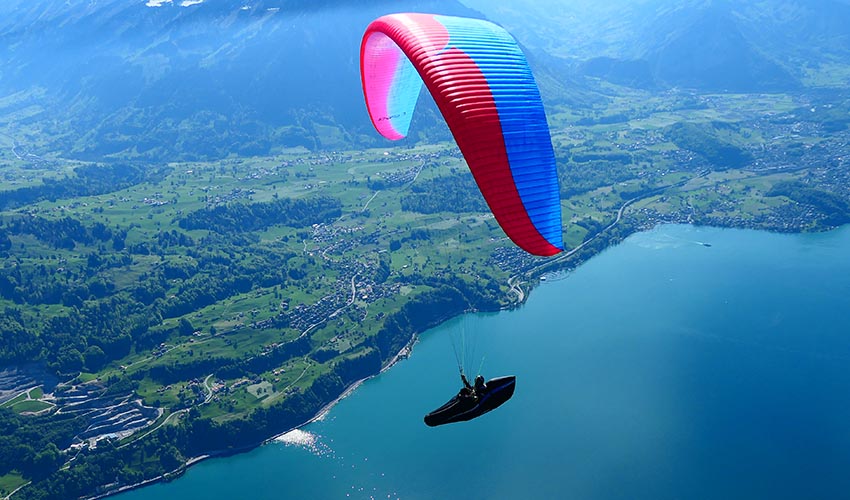
Flying on speed bar will also feel a bit different on a two-liner, explained Triple Seven’s Aljaž. “Two-liner paragliders generally have a softer speed pressure because of the narrow aerofoil, but every glider is different. It depends on how the lines are pulled down.”
Taking care of your advanced wing – lines and trimming
Two-liners require a bit more maintenance as well, such as a trim after 20 to 30 hours. All paraglider lines tend to shrink over time with exposure to moisture and temperature fluctuations. Dyneema lines are more sensitive to this than Kevlar and there are differences between brands and line diameters.
The lines are stretched again during flight, but since not all lines carry the same weight, differences in line length develop over time. This in turn affects the trimming of the glider. The most notable effect is that the rear lines shrink more than the front, causing the glider to be tilted back more, thus flying slower.
This effect occurs in all gliders, hence the need for checking the line lengths during periodic inspections. But the effect is more pronounced for more advanced gliders. Fewer lines means more stretching and shrinking differences, and the higher speed means a slower trim is noted sooner.
Seb said: “You start to feel that the glider does not bite into the thermals enough. Even a 5mm difference is noticeable so I then release the loops on the B-lines. Like many pilots, I do it by feel.”
For competitions, pilots need to keep the trim of their gliders within a certain tolerance from the certification lengths. After about 100-150 hours, the lines on a two-liner usually need to be replaced.
Choosing your harness is as important as choosing your glider
If you fly an advanced glider you will have certainly given your choice of harness some thought. The main choice, assuming that you fly a pod harness, is between a seatplate and a hammock-style seat. The experts are clear on this: a seatplate gives much more control, especially on speed when you don’t use the brakes and you have to even out the bumps with weightshift.
Seb said: “With a seatplate you have more control over the glider so you keep your heading better. The glider is more stable which improves your glide. In competitions, most pilots fly a harness with a seatplate.”

Some pilots choose a hammock style harness for comfort. It dampens out the bumps of the glider, which are more frequent and severe with advanced gliders than with an intermediates. If you choose a hammock for this reason, think again, said Aljaž: “A hammock gives a false sense of safety. If you don’t feel the turbulence it doesn’t mean it is not there. You can’t feel the information the glider gives you or it is transmitted with a delay.
“Also your response to turbulence is delayed with a hammock. Weightshift is less sensitive than with a seatboard. That means you cannot respond on time and you may get more collapses instead of less.”
What’s next? How far can the development of paragliders go?
The development of the sharknose design (patented by Ozone in 2011 as SharkNose Technology and used widely throughout the sport), and two-liner gliders were the two major advances in design over the last decade.
Big steps like that aren’t expected in the near future, but gliders keep evolving, for example through the use of ever better software for glider design. Using CFD (computational fluid dynamics), a method to calculate the airflow around a wing, designs can be optimised without ever making or flying the wing.
Skywalk’s Arne said: “Our knowledge about how to optimise all design aspects is still improving. In the future I expect still big steps in gliding behaviour in turbulent air.
“I think we will also see a higher top speed. Better fabrics will give a smoother surface. And in the end it is important how accessible this performance is to the pilot.”
Aljaž said their focus at Triple Seven is on optimising the aerofoil and comparing gliders in real air: “In addition to improving production quality, we are playing around with more cells. More cells give a smoother aerofoil, if we optimise the ribs and reduce the billow of the cells.”
As a pilot, Seb has a few wishes for the future: “There are some very good two-liners out there. They have good performance, easy launch and landing and comfortable handling. Usable performance is important. I always look for easier turning.
“In addition, in the search for lightness we lost some durability I think. An older two-liner could still be good after 400 hours. I hope the next two-liner generation will be better in that respect.
“New developments should come in stronger material for the internal structure without sacrificing on weight. Lines that do not deform as much. And it would be nice if the gliders were cheaper!”
[gearguidekicker]


